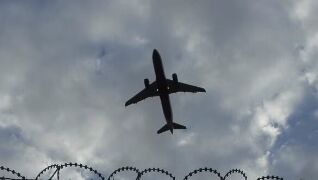NASA's High-Speed Strategy Set to Cut London to New York Flight Time to 90 Minutes, Revolutionizing Transatlantic Travel
NASA plans to revolutionize transatlantic flights with a supersonic aircraft named X-59s, aiming to reduce the travel time between London and New York to just 90 minutes.
In a groundbreaking development for the aviation industry, the air travel distance between London and New York is set to be reduced from eight hours to a mere 90 minutes. NASA, the US Space agency, has confirmed its plans for a high-speed strategy that aims to revolutionize transatlantic flights. As part of its Quesst mission, NASA is in the process of developing a supersonic aircraft named X-59s. While passenger planes currently cruise at a speed of around 600 mph, NASA is exploring the possibility of designing a commercially viable and economical supersonic jet that could travel at speeds ranging from Mach 2 to Mach 4, which translates to an astonishing 1,535-3,045 mph.
According to a study conducted by NASA's Glenn Research Center, there is immense potential for supersonic flight in approximately 50 established routes, especially in transoceanic travel. While countries such as the US have banned supersonic jets from flying over land due to sound pollution concerns, NASA is determined to change these overland supersonic flight rules. Under the Quesst mission, NASA's Advanced Air Vehicles Program (AAV) is now moving forward with its next research phase for high-speed travel. The agency is set to contract companies, with Boeing and Northrop Grumman Aeronautics Systems leading separate research teams, to develop designs and make Mach 2-plus travel a reality.
Mary Jo Long-Davis, the manager of NASA's Hypersonic Technology Project, emphasizes that this new phase will consider important factors such as safety, efficiency, economics, and societal considerations. The aim is not only to revolutionize air travel but also to ensure responsible innovation that benefits travelers while minimizing environmental harm. In another exciting development, NASA's X-59 test aircraft, constructed by Lockheed Martin, is nearing completion. Ground tests and a highly anticipated first test flight are set to take place later this year, marking a significant milestone in NASA's ongoing efforts to gather data on the impact of supersonic flight sound on human responses.
It is important to note that the X-59 is not a prototype for a commercial airliner, but rather a means for gathering crucial data to inform regulators' decisions on whether to permit commercial supersonic flights over land. NASA's Quest Mission aims to address the primary challenge of supersonic flight, the disruptive sonic boom, and develop methods to make supersonic flight more acceptable to people on the ground. While these advancements may seem like a distant fantasy, NASA's active exploration of high-speed travel in the commercial aviation market brings us one step closer to a future where international flights can be completed in a fraction of the current time. As this technology continues to evolve, the potential for a new era of air travel and global connectivity becomes increasingly tangible.




